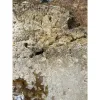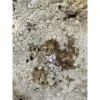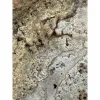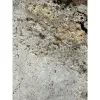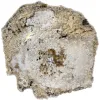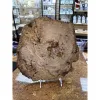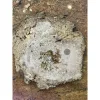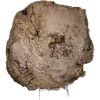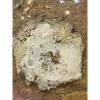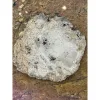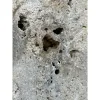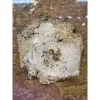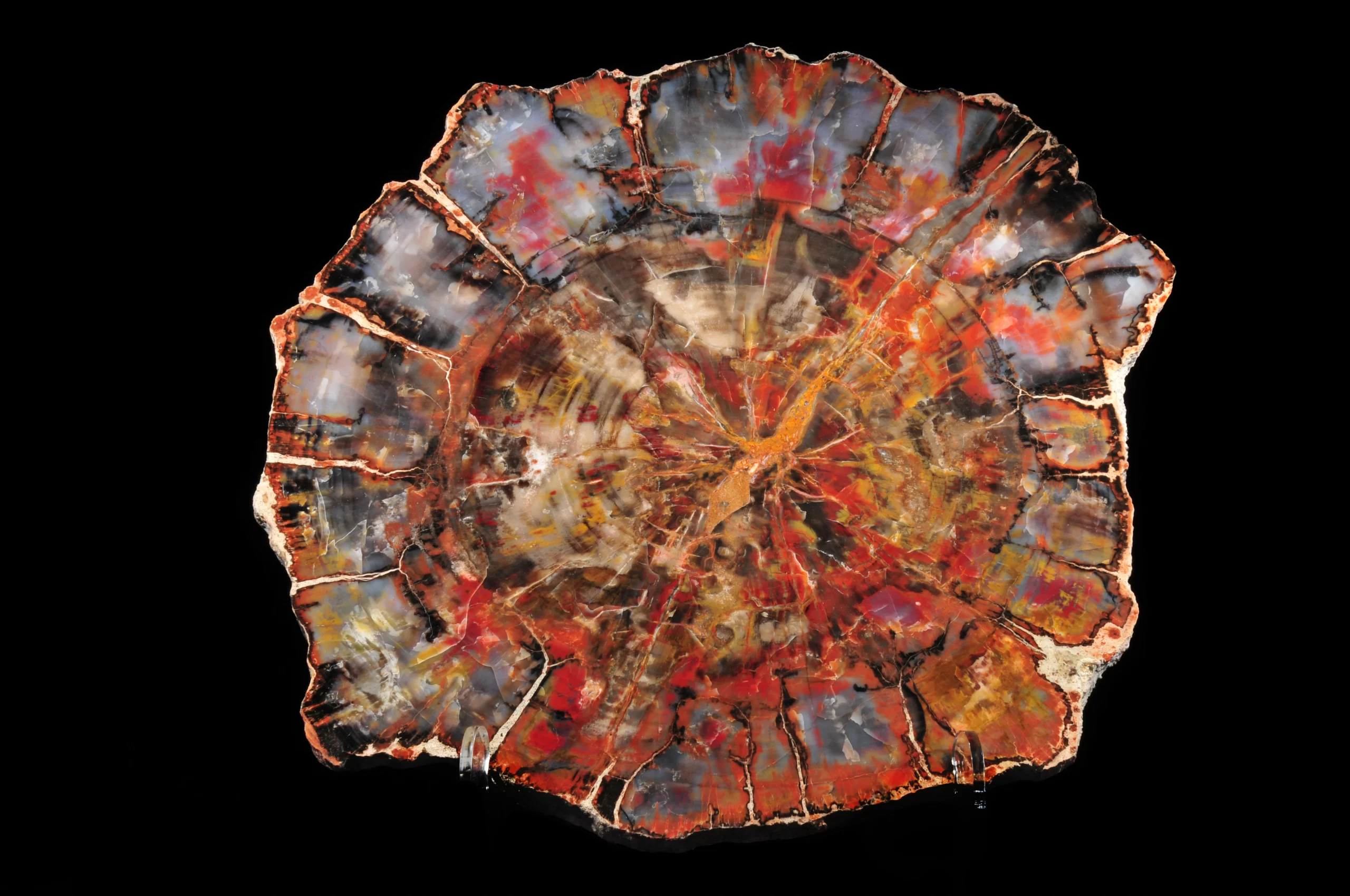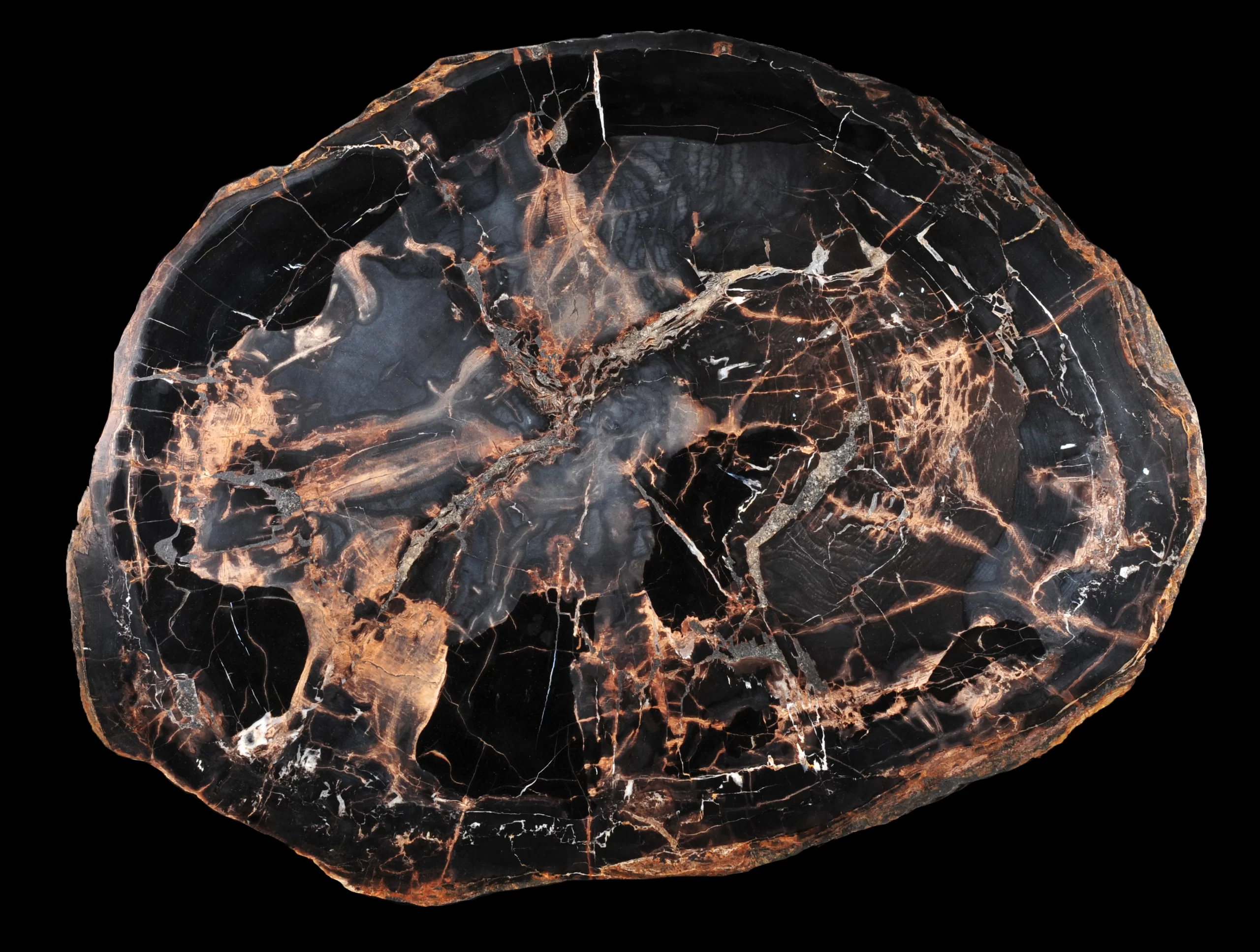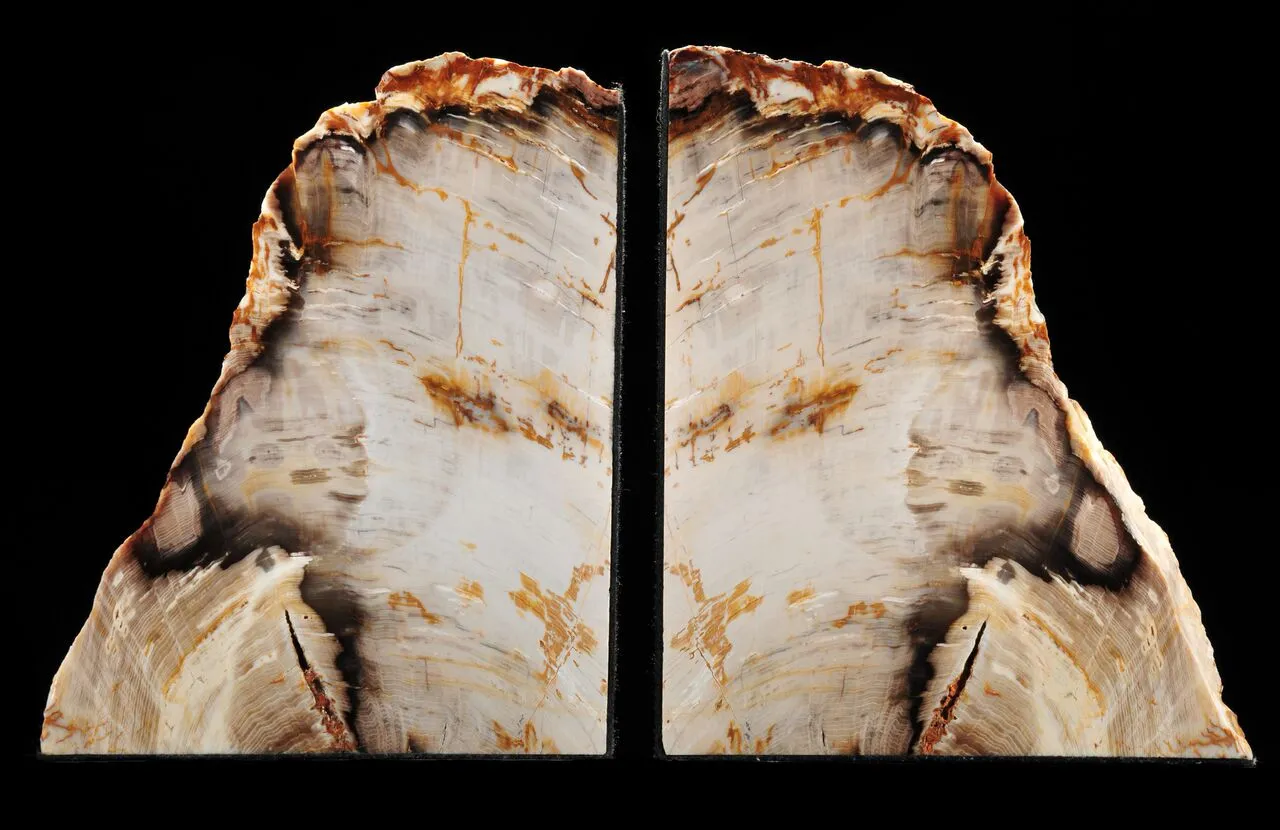Petrified wood and agatized coral are intriguing examples of nature’s ability to transform organic material into beautiful mineral specimens. The process of how they are formed, discovered, and preserved adds to their allure and scientific significance.
Formation Process
Petrified wood forms through a process called permineralization, where organic materials in the wood are replaced by minerals, usually quartz. This occurs when trees are buried under sediment, cutting off oxygen and preventing decay. Groundwater rich in dissolved minerals, such as silica, flows through the sediment and gradually replaces the organic matter with silica, preserving the wood’s original structure on a microscopic level.
Agatized coral, on the other hand, forms when coral skeletons are replaced by agate, a type of microcrystalline quartz. This process is similar to the formation of petrified wood, with silica-rich fluids replacing the original coral structure over time.
Discovery
Discovering petrified wood and agatized coral often involves geological surveys, excavation, and sometimes sheer luck. In regions known for these specimens, such as the Petrified Forest National Park or areas with ancient coral reefs, experts may conduct field surveys to locate and document fossil sites. In other cases, amateur collectors or hikers may stumble upon petrified wood or agatized coral exposed on the surface, especially after erosion or weathering has exposed new specimens.

Extraction and Preservation
Extracting petrified wood or agatized coral requires careful excavation to avoid damaging the specimens. Tools such as picks, shovels, and brushes are used to carefully remove the surrounding rock or sediment. Once extracted, the specimens are cleaned to remove excess dirt and debris.
Preserving petrified wood and agatized coral involves stabilizing the specimens to prevent further decay or damage. This can include sealing cracks or fractures with a consolidant to prevent the specimen from breaking apart. Some specimens may also be coated with a protective layer to prevent moisture or other environmental factors from degrading the fossilized material.
Display and Use
Petrified wood and agatized coral are often prized for their beauty and unique patterns. They are commonly used in jewelry, decorative items, and as specimens for educational or scientific purposes. Museums and private collectors often display these fossils to showcase their natural beauty and the processes that created them.
Importance in Science
Beyond their aesthetic value, petrified wood and agatized coral are valuable to scientists studying Earth’s history. They provide insights into past ecosystems, climate conditions, and geological processes. By studying the growth rings of petrified wood or the structures of agatized coral, scientists can reconstruct ancient environments and understand how Earth has changed over millions of years.
Let’s delve deeper into the various locations where petrified wood and agatized coral are found and explore the unique characteristics of each site.
Petrified Wood
The Petrified Forest National Park in Arizona is renowned for its vast deposits of colorful petrified wood. This national park is located in northeastern Arizona and covers about 230 square miles. The petrified wood found here dates back to the Late Triassic Period, approximately 225 million years ago, when the region was a lush, tropical forest. The petrified wood in this area is notable for its vibrant colors, ranging from red and orange to purple and blue, caused by the presence of various minerals during the petrification process.
Indonesia boasts significant deposits of petrified wood, particularly on the island of Java. The petrified wood found here is known for its stunning colors and unique patterns, making it highly sought after by collectors and artisans. The process of petrification in Indonesia is believed to have occurred during the Tertiary Period, around 20-30 million years ago. The petrified wood from Indonesia often features intricate patterns and details, reflecting the diverse geological history of the region.
In Oregon, petrified wood can be found in several locations, including the John Day Fossil Beds National Monument. This monument preserves a rich record of the region’s prehistoric past, including a variety of petrified wood specimens. The petrified wood in Oregon is estimated to be around 30 million years old and is prized for its beauty and preservation. The fossilized remains of ancient trees provide valuable insights into the ancient ecosystems of Oregon and the Pacific Northwest.
Washington State is home to petrified wood deposits as well, particularly in areas like the Gingko Petrified Forest State Park. This state park features a fascinating collection of petrified wood specimens, as well as petroglyphs and Native American rock art. The petrified wood in Washington is from the Miocene Epoch, approximately 15 million years ago. The specimens found here exhibit a range of colors and patterns, adding to their aesthetic appeal and scientific value.
In Utah, petrified wood can be found in various locations, including parts of the Colorado Plateau. The wood found in Utah is typically from the Late Triassic Period, around the same time as the petrified wood found in Arizona’s Petrified Forest National Park. Utah’s petrified wood exhibits a diverse range of colors and patterns, reflecting the unique geological history of the region. Sites like Escalante Petrified Forest State Park and the Rainbow Forest in the Valley of Fire State Park are popular destinations for petrified wood enthusiasts.
Nevada is another state where petrified wood can be found, particularly in areas like the Rainbow Forest in the Valley of Fire State Park. The petrified wood in Nevada is similar in age to that found in Arizona, dating back to the Late Triassic Period. The colorful specimens found here are a testament to the vibrant geological history of the region.
Agatized Coral

Florida is home to agatized coral deposits, particularly in areas like the Tampa Bay region. The agatized coral found in Florida is from the Miocene Epoch, approximately 5-23 million years ago. The coral here has been replaced by agate, creating stunning patterns and colors. Sites like the Peace River and the Withlacoochee River are popular destinations for fossil collectors, offering opportunities to find agatized coral specimens along with other fossilized remains.
Oregon also has agatized coral deposits, often found in association with other fossilized marine organisms. The agatized coral in Oregon is from the Miocene Epoch and is prized for its beauty and unique patterns. Sites like the Astoria Formation along the Oregon coast and the Tyee Formation in the western part of the state contain rich deposits of agatized coral and other marine fossils, providing valuable insights into Oregon’s ancient marine environments.
In Arizona, agatized coral can be found in areas like the Petrified Forest National Park, where it is often found alongside petrified wood. The agatized coral in Arizona is from the Late Triassic Period, around 225 million years ago, when the region was covered by a vast inland sea. The agatized coral specimens found here are notable for their vibrant colors and intricate structures, offering glimpses into the ancient marine ecosystems that once thrived in the region.
These diverse locations showcase the wide distribution of petrified wood and agatized coral around the world, each with its own unique geological history and specimens of scientific and aesthetic significance.
Prehistoric 101 (Learn about fossils, minerals, and meteorites)
Learn: Petrified Wood
Learn: Agate
Fossilized Marvels: Petrified Wood and Agatized Coral













